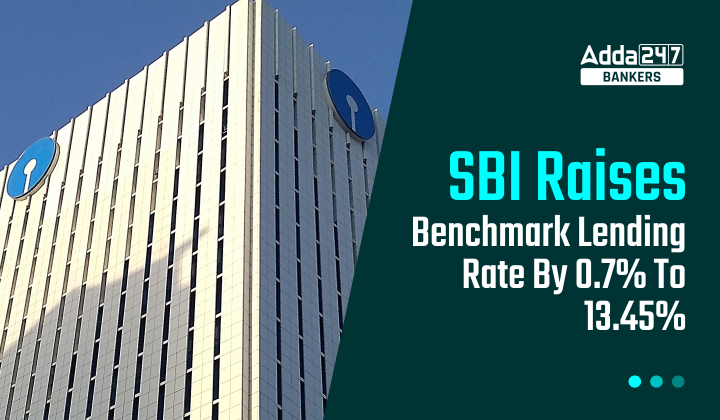Table of Contents
SBI Raises Benchmark Lending Rate By 0.7% To 13.45%: In advance of the Reserve Bank of India’s (RBI) monetary policy meeting, which will take place from September 28 to 30, the State Bank of India (SBI) increased the benchmark prime lending rate (BPLR) by 0.7% to 13.45%.
SBI Raises Benchmark Lending Rate: Key Points
- The benchmark prime lending rate (BPLR) and the base rate for loans issued by the State Bank of India (SBI) have been revised with effect from September 15 by 0.7% and 8.7%, respectively.
- SBI increased its BPLR by 70 basis points to 13.45 percent, increasing the cost of loan repayment for loans pegged to BPLR. One-hundredth of a percentage point is called a basis point (1%=100 basis points). The country’s largest lender, State Bank of India (SBI), previously raised its BPLR rate in June to 12.75 percent.
- This will lead to an increase in the loan EMI amount for borrowers.
- Nowadays, the vast majority of banks base their lending terms on External Benchmark Based Lending Rate (EBLRs) or Repo-Linked Lending Rates (RLLR).
- On a quarterly basis, the bank adjusts both the base rate and the BPLR. Other banks are anticipated to follow the SBI’s lending rate revision in the days to come.
State Bank of India (SBI)
- The public sector banking and financial services statutory body of India- State Bank of India (SBI), is a Fortune 500 business.
- Founded on: 1 July 1955
- Headquarters: Mumbai
- Chairperson: Dinesh Kumar Khara
- Tagline: “Pure Banking, Nothing Else”
Terms used in the article:
| TERM | MEANING |
| Benchmark Prime Lending Rate(BPLR) | The Reserve Bank introduced the Benchmark Prime Lending Rate, or BPLR, in 2003. It is the rate a bank charges its most credit-worthy clients. However, BPLR’s main flaw was its lack of openness. Also, banks can lend to privileged customers below the BPLR. Till 2010, it was used by banks as a benchmark rate for lending. |
| Base rate | It is the minimum interest rate at which commercial banks could give loans to customers. Till 2016, loans were taken from banks at the base rate. |
| External Benchmark Based Lending Rate (EBLRs) | With effect from 1 October 2019, the RBI ordered banks to establish a uniform external benchmark such as repo rate, 91 days Treasury bill, and 182 days Treasury bill for each loan category in order to guarantee complete transparency and standardization. |




 FCI Assistant Grade 3 Previous Year Ques...
FCI Assistant Grade 3 Previous Year Ques...
 FCI DV Admit Card 2023 Out, Download FCI...
FCI DV Admit Card 2023 Out, Download FCI...
 FCI Manager Cut Off 2023 Previous Year C...
FCI Manager Cut Off 2023 Previous Year C...







